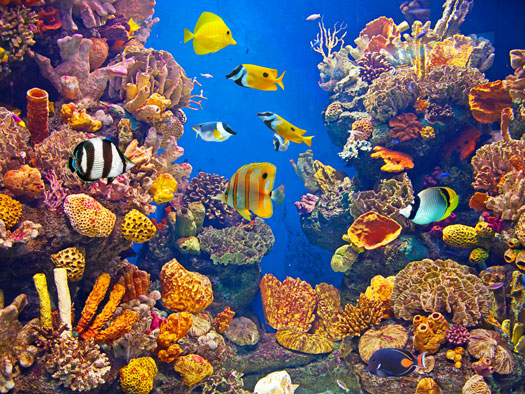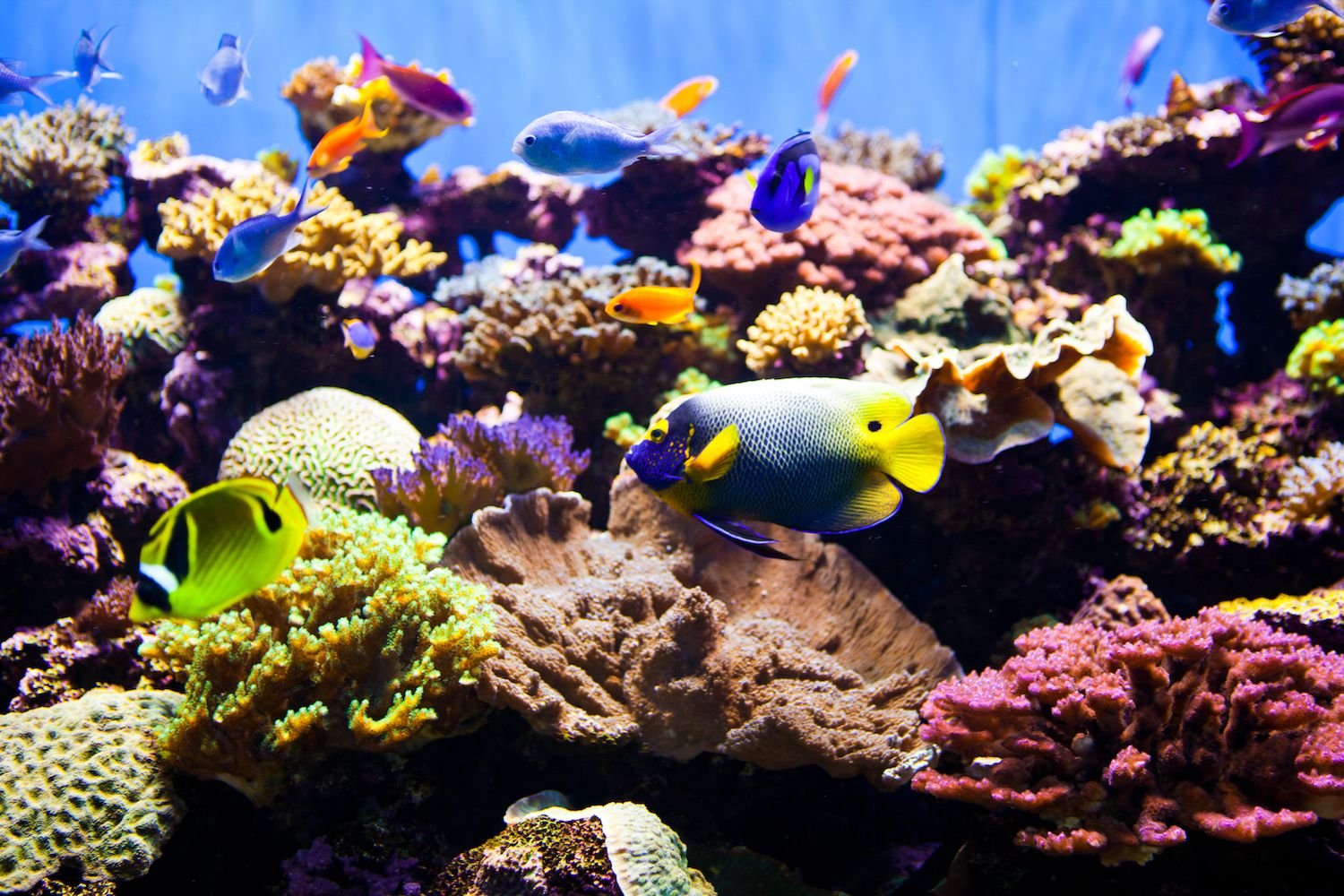The optimal tank temperature for a saltwater aquarium is typically between 76-82 degrees Fahrenheit. This temperature range is ideal for the health and well-being of saltwater fish and invertebrates, as it mimics the conditions of their natural habitat.
Keeping the water within this temperature range helps to ensure proper metabolism, growth, and overall vitality of the aquarium inhabitants. It is important for saltwater aquarium hobbyists to monitor and maintain the tank temperature within this optimal range to create a thriving aquatic environment.
As with any aquarium, it is recommended to use a reliable heater and thermometer to accurately control and monitor the water temperature.
Understanding Optimal Tank Temperatures
Maintaining optimal tank temperatures is crucial for a saltwater aquarium. Understanding the recommended temperature range and how to regulate it ensures the well-being of the aquatic life and promotes a thriving ecosystem.
Why Temperature Is Important For Saltwater Aquariums
Understanding the optimal tank temperatures for a saltwater aquarium is crucial for the health and well-being of the marine life that inhabit it. Temperature plays a vital role in maintaining a stable and balanced environment, which is essential for the survival of the delicate ecosystem within the aquarium.
Factors To Consider For Optimal Tank Temperatures
When it comes to determining the optimal temperatures for a saltwater aquarium, there are several factors to consider:
- Species Requirement: Different marine species have specific temperature requirements. It is important to research and understand the preferred temperature range of the marine life you plan to keep in your aquarium. This information can usually be found in species care guides or by consulting with experienced aquarists.
- Environmental Conditions: Along with the species requirements, you should also take into account the natural environmental conditions in which the marine life you are keeping would normally thrive. This includes factors such as the temperature of the water in their natural habitats.
- Temperature Stability: Stability is key when it comes to maintaining optimal tank temperatures. Sudden temperature fluctuations can cause stress and even lead to the death of the marine life in your aquarium. It is important to invest in quality heating and cooling equipment to ensure the temperature stays within the desired range.
- Aquarium Size: The size of your aquarium can also impact temperature regulation. Larger aquariums tend to have more stable temperature gradients, while smaller ones can experience rapid changes in temperature. This should be taken into consideration when choosing the appropriate temperature range for your saltwater aquarium.
- Other Tank Parameters: It is important to note that temperature does not work in isolation. It is interconnected with other tank parameters such as pH, salinity, and oxygen levels. Ensuring these parameters are within the appropriate range will help create a harmonious and healthy aquarium environment.
The Impact Of Temperature On Marine Life
The temperature of a saltwater aquarium can have a significant impact on the marine life it houses. Here are a few ways in which temperature affects marine organisms:
- Metabolism and Growth: Temperature influences the metabolism and growth rate of marine organisms. Higher temperatures can accelerate metabolism, leading to increased energy consumption and growth. Conversely, lower temperatures can slow down metabolism and growth.
- Reproduction: Temperature plays a crucial role in the reproduction of marine organisms. Certain species have specific temperature requirements for successful breeding and larval development. Failure to maintain the appropriate temperature range can result in reproductive failure.
- Stress and Disease: Fluctuations in temperature can cause stress and weaken the immune system of marine life, making them more susceptible to diseases and infections. Additionally, extreme temperatures can directly harm or even kill delicate organisms in the aquarium.
- Behavior: Temperature can also affect the behavior of marine organisms. Some species may become more active or aggressive in higher temperatures, while others may become lethargic or exhibit abnormal behavior in lower temperatures.
Understanding the optimal tank temperatures and their influence on marine life is essential for maintaining a thriving saltwater aquarium. By considering the various factors that impact temperature and ensuring stability, you can create a suitable environment for the long-term health and well-being of your aquatic inhabitants.

Credit: blog.aquaticwarehouse.com
Recommended Temperature Ranges
Maintaining optimal tank temperatures is crucial for a saltwater aquarium. The recommended temperature range ensures the well-being of your marine life, promoting their growth and preventing stress-related illnesses.
Ideal Temperature Range For Reef Tanks
Maintaining the optimal temperature range is crucial for the health and well-being of your saltwater aquarium. For reef tanks, it is recommended to keep the temperature between 76°F and 82°F (24°C and 28°C). This temperature range allows for optimal growth and survival of corals and other marine organisms in your reef ecosystem. It is important to note that specific species may have slightly different temperature requirements, so it’s always best to research the specific needs of the organisms in your reef tank.Recommended Temperatures For Different Marine Species
Different marine species have specific temperature preferences. Here are some recommended temperature ranges for common marine species: 1. Tropical Fish: Most tropical fish thrive in temperatures between 75°F and 80°F (24°C and 27°C). It’s important to research the specific temperature needs of the fish species you plan to keep. 2. Corals: Corals generally prefer temperatures between 75°F and 80°F (24°C and 27°C). However, some corals may require slightly higher or lower temperatures, so it’s essential to research the specific requirements of the corals in your tank. 3. Invertebrates: Many invertebrates, such as shrimp and crabs, thrive in temperatures between 72°F and 78°F (22°C and 26°C). It is crucial to research the specific temperature requirements of the invertebrates in your saltwater aquarium. 4. Clownfish: Clownfish are popular marine fish and prefer temperatures between 75°F and 80°F (24°C and 27°C). However, different species of clownfish may have slightly different temperature preferences, so it’s essential to research the specific needs of the clownfish you plan to keep.Managing Temperature Fluctuations
It is natural for temperature fluctuations to occur in a saltwater aquarium, but it’s essential to minimize these fluctuations to ensure the well-being of your marine organisms. Here are some tips for managing temperature fluctuations: 1. Use a Reliable Aquarium Heater: Invest in a high-quality aquarium heater with a built-in thermostat. This will help maintain a stable temperature within your desired range. 2. Monitor Room Temperature: Keep an eye on the room temperature where your aquarium is located. Sudden changes in room temperature can affect the temperature of your tank. Avoid placing your aquarium near sources of heat or drafts. 3. Install Cooling Equipment: If your tank temperature tends to rise above the recommended range, consider using a chiller or cooling fans to lower the temperature. These devices can help regulate the temperature during hot summer months. 4. Regularly Check and Calibrate Thermometers: Thermometers can sometimes be inaccurate, so it’s important to regularly check and calibrate them to ensure accurate temperature readings. 5. Avoid Drastic Temperature Changes: Rapid changes in temperature can be stressful for marine organisms. When performing water changes or adding new livestock, make sure to match the temperature of the new water with that of the tank gradually. By following these recommendations and regularly monitoring the temperature of your saltwater aquarium, you can create a stable and optimal environment for the health and well-being of your marine organisms.Maintaining Optimal Tank Temperatures
One of the key factors in maintaining a healthy saltwater aquarium is ensuring optimal tank temperatures. Saltwater fish and corals thrive within specific temperature ranges, and deviations from these ranges can lead to stress, disease, and even death. In this article, we will explore the importance of maintaining optimal tank temperatures for a saltwater aquarium and discuss the various solutions for both cooling and heating the tank.
Choosing And Using Aquarium Thermometers
To effectively monitor and maintain the temperature of your saltwater tank, it is essential to select a reliable aquarium thermometer. These devices come in various types, including digital, analog, and infrared thermometers. Digital thermometers are highly accurate and easy to read, while infrared thermometers allow for non-contact temperature measurements. Whichever type you choose, ensure that it is specifically designed for aquarium use.
Once you have chosen the thermometer, it is crucial to position it correctly within the tank. Place it in a location that accurately represents the overall temperature of the tank water, away from direct sunlight, heaters, and cooling devices. Regularly calibrate the thermometer to maintain accuracy and ensure it is functioning properly.
Cooling Solutions For Reef Tanks
Reef tanks, in particular, can face challenges in maintaining optimal temperatures due to the heat generated by lighting and other equipment. If the temperature of your saltwater tank rises above the recommended range, there are several cooling solutions available:
- Installing cooling fans: These fans help to dissipate heat and lower the tank temperature. Position them strategically near the water surface to enhance evaporation and promote cooling.
- Using a chiller: Chillers are specialized cooling devices that actively cool the water in the tank. They are ideal for larger reef tanks or for areas with high ambient temperatures.
- Implementing thermoelectric cooling: Thermoelectric cooling systems use the Peltier effect to transfer heat from the water to the surrounding environment. They are energy-efficient and suitable for smaller tanks.
Regular monitoring of the tank temperature is crucial when using cooling solutions. Aim to maintain a stable temperature within the recommended range to provide a comfortable and stress-free environment for your saltwater inhabitants.
Heating Solutions For Reef Tanks
In colder climates or during winter months, reef tanks may require heating to maintain optimal temperatures. Here are some heating solutions to consider:
- Submersible heaters: These heaters are designed to be fully submerged in the tank water and consist of a heating element and a thermostat. They are the most common and affordable heating option for reef tanks.
- Heating mats or cables: These heating devices are placed beneath the tank to provide even heat distribution. They are suitable for tanks with thick bottoms or those with delicate coral species.
- Heater controllers: To ensure the temperature remains within the desired range, consider using a heater controller. These devices provide precise temperature control and prevent overheating accidents.
Regardless of the heating solution you choose, always monitor the tank temperature closely to prevent any drastic fluctuations that could stress your saltwater inhabitants.
By choosing the right thermometer and implementing effective cooling and heating solutions, you can maintain optimal tank temperatures for your saltwater aquarium. This will help ensure the health and well-being of your fish and corals, allowing you to enjoy a thriving and beautiful marine ecosystem.

Credit: m.youtube.com

Credit: www.bulkreefsupply.com
Frequently Asked Questions On Optimal Tank Temperatures For A Saltwater Aquarium
What Is The Best Temperature For A Saltwater Tank?
The optimal temperature for a saltwater tank is between 76-82 degrees Fahrenheit.
Is 72 Too Cold For Reef Tank?
No, 72 degrees is not too cold for a reef tank.
What Temperature Do Clownfish Like The Water?
Clownfish prefer water temperatures between 76-82 degrees Fahrenheit.
What Temp Do Corals Like?
Corals prefer temperatures between 76-82 degrees Fahrenheit for optimal growth and health.
Conclusion
Maintaining optimal tank temperatures is crucial for the health and well-being of your saltwater aquarium. By ensuring that the temperature is within the recommended range, you create a safe and stable environment for your marine life. The ideal temperature for a saltwater tank typically falls between 76-82 degrees Fahrenheit.
It’s important to monitor and regulate the temperature to prevent stress and other complications. Whether you use a heater or a chiller, finding the right temperature for your saltwater aquarium will promote the growth and vitality of your marine creatures.

